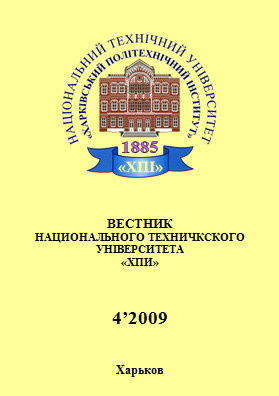Двухкритериальная транспортная задача
DOI:
https://doi.org/10.20998/%25xAbstract
Предложен метод получения Парето-оптимального множества решений транспортной задачи по критериям «суммарная стоимость – максимальное время перевозок», которое обеспечивает выбор компромиссного решения.The method of receipt Pareto - optimum great number of decisions of a transport task which provides the choice of compromise decision on criteria a «total cost - maximal time of transportations» is offered.
References
Юдин Д.Б. Задачи линейного программирования транспортного типа / Д.Б. Юдин, Е.Г. Гольштейн. – М.: Наука, 1969. – 384 с.
Вагнер Г. Основы исследования операций / Г. Вагнер. Т.1.: пер. с англ. – М.: МИР, 1972. – 335 с.
Раскин Л.Г. Многоиндексные задачи линейного программирования / Л.Г. Раскин., О.И. Кириченко. – М.: Радио и связь, 1982. – 240 с.
Downloads
How to Cite
Серая, О. В. (2017). Двухкритериальная транспортная задача. Bulletin of National Technical University "KhPI". Series: System Analysis, Control and Information Technologies, (4), 64–68. https://doi.org/10.20998/%x
Issue
Section
SYSTEM ANALYSIS AND DECISION-MAKING THEORY
License
Copyright (c) 2017 Bulletin of NTU “Kharkiv Polytechnic Institute”. Series: System Analysis, Control and Information TechnologiesAuthors who publish with this journal agree to the following terms:
- Authors retain copyright and grant the journal right of first publication with the work simultaneously licensed under a Creative Commons Attribution License that allows others to share the work with an acknowledgement of the work's authorship and initial publication in this journal.
- Authors are able to enter into separate, additional contractual arrangements for the non-exclusive distribution of the journal's published version of the work (e.g., post it to an institutional repository or publish it in a book), with an acknowledgement of its initial publication in this journal.
- Authors are permitted and encouraged to post their work online (e.g., in institutional repositories or on their website) prior to and during the submission process, as it can lead to productive exchanges, as well as earlier and greater citation of published work (See The Effect of Open Access).


